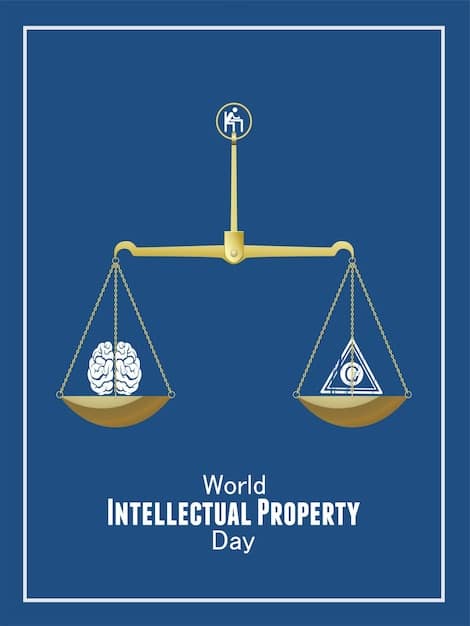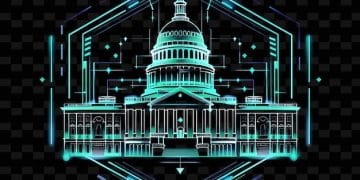Balancing National Security and Civil Liberties in the Digital Age

The challenge of balancing national security concerns with civil liberties in the age of digital surveillance requires navigating complex legal frameworks, technological advancements, and evolving societal expectations to ensure both safety and freedom.
In the digital age, the United States faces a critical challenge: how will the US balance national security concerns with civil liberties in the age of digital surveillance? This question has become increasingly relevant as technology advances and the government’s capacity to monitor citizens’ activities grows. Navigating this complex landscape requires a deep understanding of the legal frameworks, technological advancements, and societal values at stake.
The Evolution of Digital Surveillance in the US
Digital surveillance has become an integral part of national security strategies in the US. Over the years, its methods and scope have evolved significantly, influenced by technological advancements and security imperatives. Understanding this evolution is crucial to grasping the current state of the debate surrounding civil liberties and surveillance.
Early Surveillance Practices
Before the digital age, surveillance primarily involved physical monitoring and wiretapping. These methods were resource-intensive and limited in scope.
Post-9/11 Surveillance Expansion
The September 11th attacks marked a turning point, leading to the expansion of surveillance powers under laws like the Patriot Act.
- Mass data collection became a norm, targeting communications metadata.
- Increased information sharing between government agencies.
- Enhanced surveillance technologies, including facial recognition and drone surveillance.

The revelations by Edward Snowden in 2013 brought the extent of government surveillance to public attention, sparking widespread debate about privacy and government overreach. These disclosures led to legal challenges and calls for increased transparency and oversight.
Legal Frameworks Governing Surveillance
Several laws and regulations govern digital surveillance in the United States. These frameworks aim to provide a balance between enabling necessary intelligence gathering and protecting individual rights. However, the interpretation and application of these laws are often subjects of intense debate.
The Fourth Amendment
The Fourth Amendment to the US Constitution protects individuals from unreasonable searches and seizures, requiring warrants based on probable cause.
The Electronic Communications Privacy Act (ECPA)
ECPA regulates government access to electronic communications, including emails and stored data.
The Foreign Intelligence Surveillance Act (FISA)
FISA establishes procedures for physical and electronic surveillance and collection of foreign intelligence information.
- It created the Foreign Intelligence Surveillance Court (FISC), which approves surveillance warrants.
- FISA Amendments Act (FAA) of 2008 allows surveillance of foreign targets located outside the US, even if they communicate with US persons.
- Section 702 of FISA is frequently used to collect communications of foreign targets, which can incidentally collect data of US citizens.
The legal frameworks governing surveillance continue to evolve in response to legal challenges and technological advancements. Courts often play a crucial role in interpreting these laws and setting limits on government surveillance powers.
The Role of Technology in Surveillance
Technology has fundamentally transformed the landscape of surveillance, enabling far greater reach and capabilities than ever before. From data mining to facial recognition, technological advancements have both enhanced national security efforts and raised serious concerns about civil liberties. New technologies continue to emerge, pushing the boundaries of what is possible in surveillance.
Data Mining and Analytics
Government agencies utilize data mining techniques to analyze vast amounts of data and identify potential threats.
Facial Recognition Technology
Facial recognition technology allows for real-time identification of individuals in public spaces.
Artificial Intelligence (AI) in Surveillance
AI is increasingly used to automate surveillance processes and analyze data with greater efficiency.

- Predictive policing algorithms use AI to forecast potential crime hotspots.
- AI-driven analysis of social media content to identify potential threats.
- Automated monitoring of communications for specific keywords or patterns.
The ongoing development of new technologies presents both opportunities and challenges. It is essential to carefully consider the implications of these tools and establish appropriate safeguards to protect civil liberties.
Civil Liberties Concerns in the Digital Age
Digital surveillance raises several critical civil liberties concerns. The potential for government overreach, the chilling effect on free expression, and the risks of discrimination and profiling are significant challenges that must be addressed. Addressing these concerns is essential to ensuring that surveillance practices are consistent with constitutional values.
Privacy Rights
The right to privacy is a fundamental civil liberty at risk from mass surveillance.
Freedom of Speech and Association
Surveillance can have a chilling effect on free speech, particularly for journalists, activists, and marginalized groups.
Discrimination and Profiling
Surveillance technologies can be used to target specific communities based on race, religion, or political beliefs.
Civil liberties organizations and advocacy groups play a crucial role in challenging surveillance practices and advocating for greater protections. Legal challenges to surveillance laws have often resulted in important court decisions that limit government powers and safeguard individual rights.
Balancing Security and Freedom: Finding the Right Approach
Striking a balance between national security and civil liberties requires a comprehensive approach that includes legal reforms, technological safeguards, and public oversight. There’s no easy solution, and it demands continuous effort and adjustments as new technologies and security threats emerge.
Legal Reforms and Oversight
Strengthening legal frameworks and oversight mechanisms is crucial to preventing surveillance abuse.
Technological Safeguards
Implementing technological solutions can help protect privacy while still enabling effective surveillance.
Transparency and Accountability
Increasing transparency and accountability can help build public trust in surveillance practices.
- Regular audits of surveillance programs.
- Public reporting on the scope and impact of surveillance activities.
- Mechanisms for individuals to challenge surveillance records.
Finding the right balance also requires ongoing public dialogue about the costs and benefits of different surveillance approaches. It’s a complex process that involves policymakers, legal experts, technologists, and the public.
International Perspectives on Surveillance and Civil Liberties
Different countries have adopted various approaches to balancing national security and civil liberties in the digital age. Examining these international perspectives can provide valuable insights and lessons for the United States. Each approach reflects unique legal traditions, cultural values, and security concerns.
European Union
The EU has implemented strict data protection laws, such as the General Data Protection Regulation (GDPR), which significantly restricts surveillance activities.
Canada
Canada’s approach emphasizes judicial oversight and transparency in surveillance operations.
Australia
Australia has expanded surveillance powers in response to terrorism threats.
Comparing these different approaches highlights the diversity of opinion on how best to balance security and freedom. These diverse perspectives can help inform the ongoing debate in the US and contribute to the development of more effective and rights-respecting surveillance policies.
| Key Aspect | Brief Description |
|---|---|
| 🛡️ National Security | Prioritizes surveillance to prevent threats and protect citizens. |
| ⚖️ Civil Liberties | Focuses on protecting privacy, free speech, and preventing discrimination. |
| 🏛️ Legal Frameworks | Laws like FISA and the Fourth Amendment aim to balance security and rights. |
| 🌐 International Views | Different countries offer varying approaches to surveillance and civil liberties. |
Frequently Asked Questions
▼
Digital surveillance involves monitoring digital activities, such as online communications and data storage, to gather intelligence or enforce laws. This can include tracking emails, social media, and browsing history.
▼
The Patriot Act expanded government surveillance powers, raising concerns about privacy and potential abuses. Some provisions allowed for broader data collection and reduced judicial oversight.
▼
FISA establishes the legal framework for foreign intelligence surveillance, outlining procedures for warrants and data collection. It balances national security needs with constitutional protections.
▼
Technological safeguards include encryption, data minimization techniques, and privacy-enhancing technologies. These tools can help reduce the impact of surveillance on individuals’ personal information.
▼
Transparency involves openly disclosing surveillance activities, allowing the public and oversight bodies to assess their impact. This can help ensure accountability and prevent abuses of power.
Conclusion
The challenge of balancing national security concerns with civil liberties in the age of digital surveillance is an ongoing balancing act. It requires adapting legal frameworks, adopting technological safeguards, and maintaining public oversight to protect both security and freedom in the digital age.





